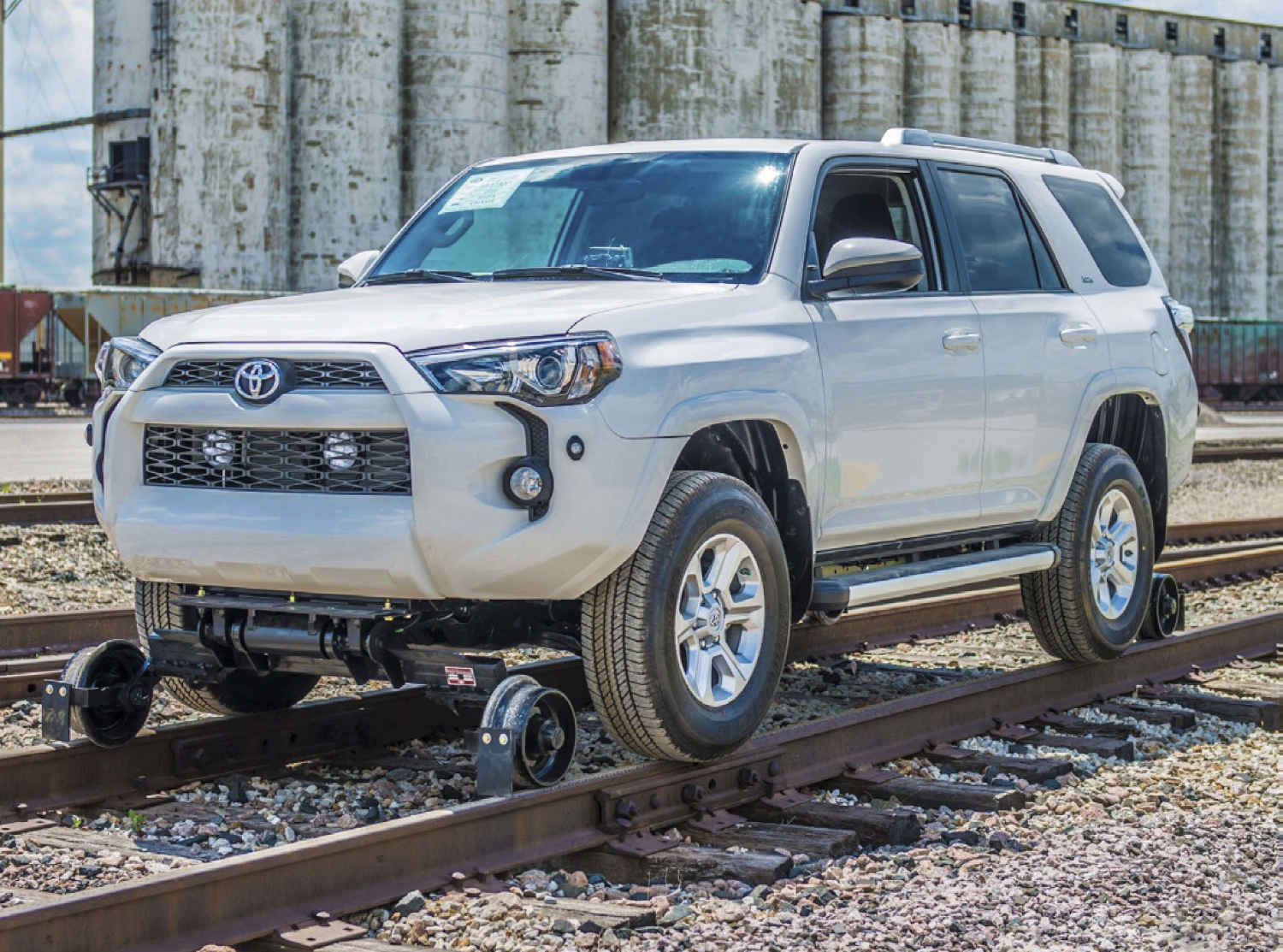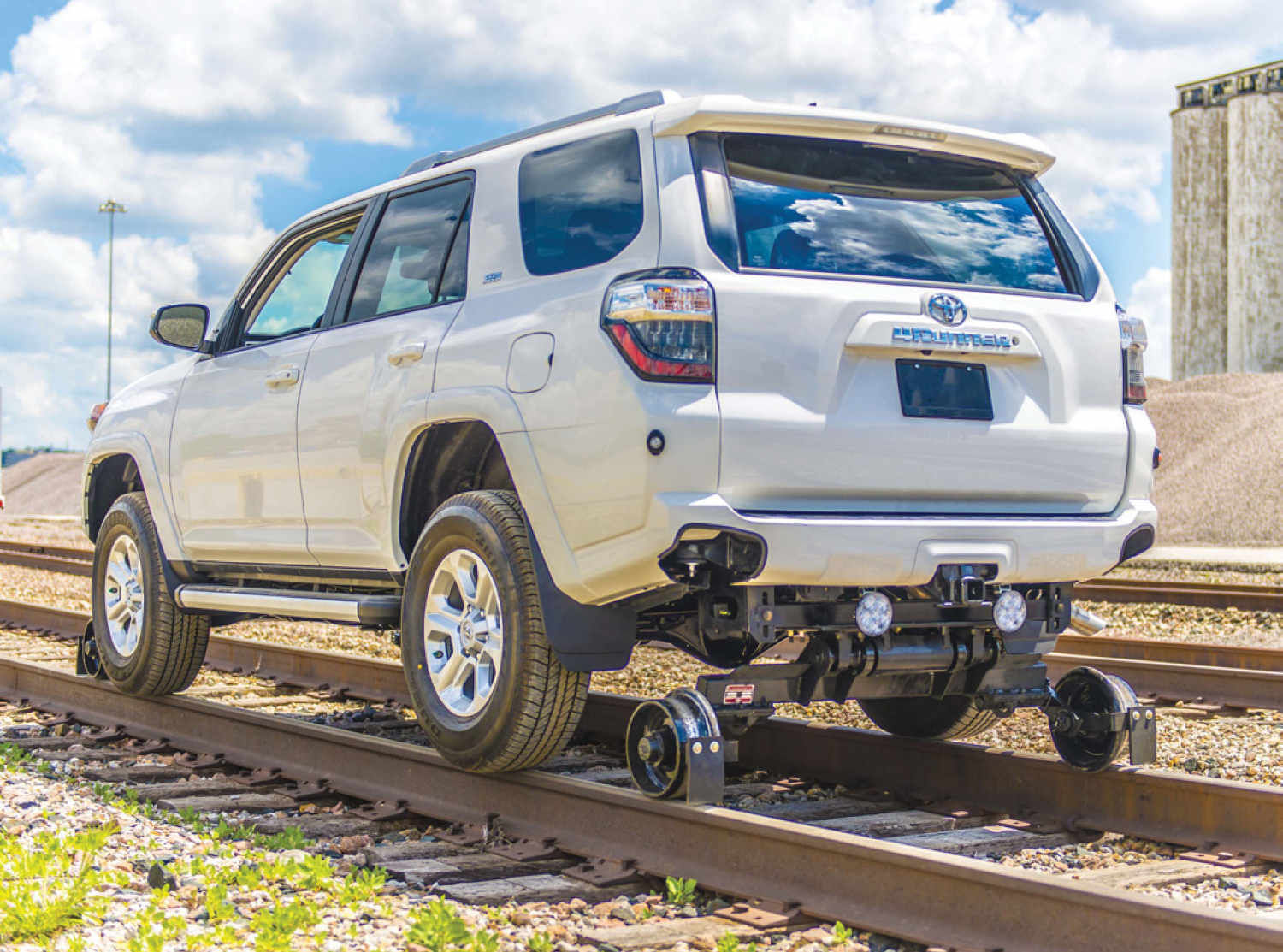
Off-Road Meets On-Rails: Toyota 4Runner Goes Full Train With Hi-Rail Conversion
In this article:
If you thought Toyota made cool SUVs, just wait until you hear about the Hi-Rail. This Toyota 4Runner has an important job on the railroads around the country. Sure, it can off-road, but it can also chase a train. Some modern vehicles are equipped with systems that allow trucks and SUVs to drive on actual train tracks to complete maintenance. The 4Runner is a great example of an SUV that can be fit with this equipment pretty easily.
What is the Toyota 4Runner Hi-Rail?

Depending on where you live, you might see more Toyota 4Runner SUVs than you do trains. The 4Runner Hi-Rail, or High-Rail, is a special version of the SUV engineered to drive down the rails used for trains. You won’t find this version straight from Toyota’s factory, but there are many companies that can customize the SUV after the fact.
A company out of Atlanta called Diversified Metal Fabricators calls the specialized SUV the DMF RW-1013 Railgear. There are many examples of the 4Runner Hi-Rail out there, but it is not limited to just the 4Runner. Any pickup truck or SUV with a gross vehicle weight of 8,000 to 11,500 pounds can utilize this system. Vehicles heavier than 11,500 pounds can use the extended payload package.
The company retrofits the RW-1013 Railgear onto the midsize SUV within the length of the vehicle. This makes it easier to walk around the SUV. You don’t lose access to the truck bed or rear hatch, either. The driver controls the gear from a hydraulically operated control panel inside the cabin. There can also be switches at the front/back of the vehicle to move the railgear into place.
How does the Toyota 4Runner Hi-Rail work?

On each guidewheel, rubber torsion suspension helps ensure a smooth ride. The 4Runner actually rides on the railway with each tire, which lightens up the load. It does require aftermarket wheel kits on other vehicles, but the 4Runner can ride like this using its factory wheels and tires. The Canadian Hi-Rail company specifies that the DMF RW-1013 is to be used with the 4Runner SR5 trim equipped with 4×4.
There are many safety features in place to ensure the sport utility vehicle is able to complete the job without issue. If there is a hydraulic failure on the railgear, the system has an emergency hand pump that allows the SUV to be removed from the rails. All materials used for the 4Runner Hi-Rail are made of carbon steel for added strength. The guidewheels use steel casings. The front gear weighs around 293 pounds, while the back weighs 354.
The front bumper must be trimmed to install the Hi-Rail kit on the Toyota 4Runner. Then, the railgear is stored in a convenient spot within the body of the SUV. The 4Runner can drive up to the tracks or area that needs maintenance, complete the job, and hop off.
Just another accolade for the 4Runner
Vehicles like the 4Runner Hi-Rail are necessary for upkeep on train tracks throughout the US. The US has the most train tracks of any country, with more than 160,000 miles of tracks. You don’t need a 4Runner to traverse the tracks, but it is helpful to have the ability to convert it. There are also purpose-built vehicles to hop onto the tracks, but the versatility of Toyota’s midsize SUV is just another accolade on the long list.
Some other available vehicles that can utilize such railgear include the Chevy Suburban 2500, some Ford F-Series models with single rear wheels, the Dodge Durango, and even the Dakota. Pickup trucks seem to be the most popular conversion choice, but the 4Runner has its merits.
It makes sense companies would take advantage of that dependability since the 4Runner has a good shot at hitting 250,000 miles. At the end of the day, what other SUV can take your family to the park and fix train tracks?



